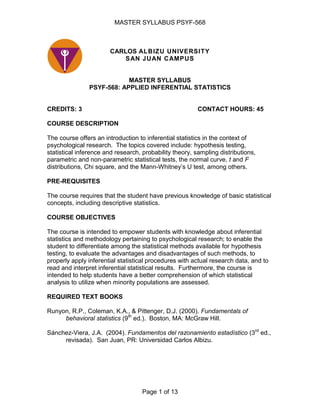The document provides an overview of a master syllabus for an applied inferential statistics course at Carlos Albizu University. The course introduces students to key concepts in inferential statistics and hypothesis testing through 16 classes involving lectures, assignments, and projects. Students learn various statistical tests including normal distribution, t-test, chi-square, and ANOVA that can be applied to single-group and between-group research designs for psychological research and assessment of minority populations. Evaluation is based on exams, presentations, homework, and exercises.












